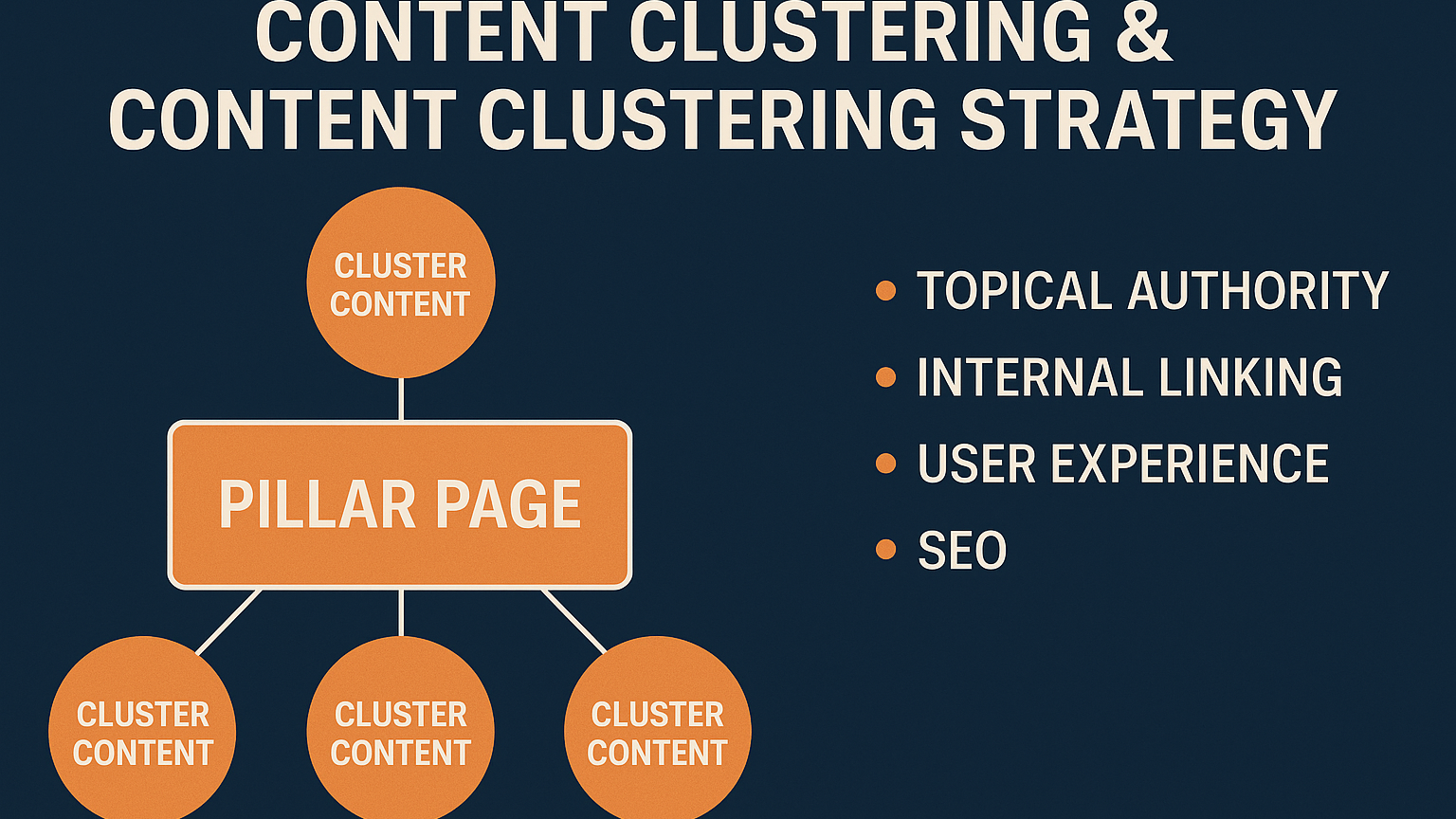🚀 Content Clustering & Content Clustering Strategy: The Ultimate Guide for Modern SEO

In today’s evolving search landscape, traditional keyword stuffing and isolated blog posts no longer cut it. If you want to dominate organic rankings, content clustering is the strategy you can’t ignore.
Whether you’re an SEO professional, content strategist, or business owner, understanding content clusters can transform how you structure your website and drive meaningful traffic.
🔍 What is Content Clustering?
Content clustering is a content architecture strategy that organizes web content into logical groups around a central theme (known as a pillar page). Each pillar page is supported by cluster content — individual pieces that dive deeper into specific subtopics and internally link back to the pillar.
Think of it as a hub-and-spoke model:
-
Pillar page (hub): Covers a broad topic comprehensively.
-
Cluster pages (spokes): Address specific, related subtopics in detail.
-
Internal links: Connect all cluster pages to the pillar and vice versa, strengthening topical signals.
🧠 Why Does Content Clustering Matter in SEO?
Search engines like Google are moving toward semantic search — understanding topics, not just keywords. Algorithms like BERT, MUM, and SGE (Search Generative Experience) reward websites that demonstrate topical depth, relevance, and authority.
Here’s why content clustering is essential:
✅ 1. Boosts Topical Authority
When your site covers a subject from multiple angles, Google sees you as an authority — increasing your chances of ranking for more queries.
✅ 2. Improves Internal Linking
Proper internal links between pillar and cluster content improve crawlability, user navigation, and dwell time.
✅ 3. Enhances User Experience
Visitors can easily explore a topic in-depth, reducing bounce rates and improving session duration.
✅ 4. Future-Proofs Your SEO
Content clusters align with AI-driven ranking systems that focus on user intent and content relationships, not just exact-match keywords.
🧱 Elements of a Successful Content Cluster
Here’s how to build a content clustering strategy from scratch:
1. Identify a Core Topic (Pillar)
Choose a broad, high-level keyword or theme relevant to your audience.
Example: “Content Marketing Strategy”
2. Create the Pillar Page
Write a long-form, authoritative guide that covers the core topic holistically.
3. Build Supporting Cluster Content
Create separate blog posts or pages that dive deeper into subtopics.
Examples:
-
“Content Calendar Templates”
-
“How to Repurpose Blog Posts”
-
“Measuring ROI in Content Marketing”
4. Link Strategically
Use contextual internal links between the pillar and its cluster pages using keyword-rich anchor text.
📊 Real-World Example: Google Business Listing
-
Pillar Page: “Ultimate Guide to Google Business Profile”
-
Cluster Topics:
-
“How to Claim Your Business on Google”
-
“Google Business Reviews Strategy”
-
“Optimizing Your Google Business for Local SEO”
-
“Common GMB Mistakes and How to Fix Them”
-
By linking them all, you create a powerful cluster that increases your chances of ranking for dozens of related queries.
🛠 Tools to Build Content Clusters
Here are a few tools that help identify topics, structure clusters, and monitor performance:
-
SEMrush Topic Research Tool
-
Ahrefs Content Explorer
-
SurferSEO
-
Frase.io
-
Google Search Console (for linking insights)
🚀 Final Thoughts: The Future Belongs to Clusters
In a world where AI and intent-driven search are taking over, your content needs more than keywords—it needs structure and strategy. Content clustering not only improves SEO but also creates a better experience for your audience.
If you’re serious about scaling your online visibility, it’s time to rethink how your content connects—and clusters.
Suggested Hashtags:
#Content_Clustering ,
#SEO_Strategy,
#Content_Marketing,
#Topical_Authority,
#Content_Cluster_Model,
#Internal_Linking_Strategy,
#Google_Algorithms,
#SEO_Tips,
#Pillar_Content,
#Cluster_Content

